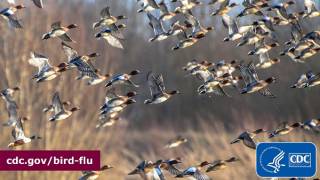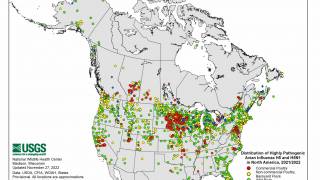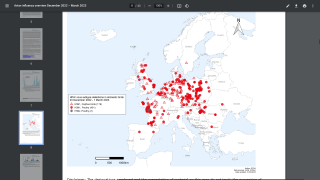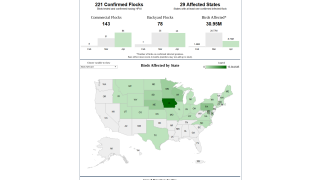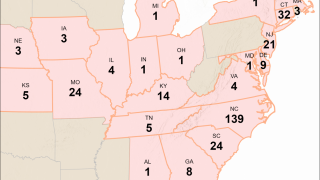Bird Flu Risk Rarely Detected in Humans

Is a bird flu pandemic really a risk to people in 2023? That is the question a group of researchers answered in an Early Release Original Publication posted today.
Since late 2021, the largest bird flu outbreak in history has impacted most countries.
In the U.S., the Centers for Disease Control and Prevention published a June 2023 Dispatch, Volume 29, Number 6, confirming a total of 39 states recently experienced outbreaks of highly pathogenic avian influenza A(H5N1) virus in birds from commercial poultry farms and backyard flocks.
Over 4,000 persons were exposed to HPAI H5N1–infected birds and were monitored for symptomatic illness across the United States.
Among persons exposed to infected birds, highly pathogenic avian influenza( HAPI) viral RNA was detected in one respiratory specimen from just one person in Colorado from February 7 thru September 3, 2022.
In addition, A(H5) serologic tests conducted in two U.S. states did not identify evidence of asymptomatic infection with influenza A(H5) 2.3.4.4b virus.
Although the full extent of exposure among those monitored is unknown, our results are consistent with a low risk for avian-to-human transmission among persons exposed to wild and domesticated birds infected with influenza A(H5N1) clade 2.3.4.4b viruses detected in the U.S. since January 2022
These findings are consistent with other reports.
In previous years, no human infection with H5N1 viruses was detected in Europe, despite various avian H5N1 outbreaks.
However, at the time of this investigation, seven persons exposed to the current H5N1 virus clade had H5N1 virus detected by rRT-PCR.
Some of those cases were asymptomatic or mild and could represent contamination of the nasal mucosa instead of infection.
Serologic testing of exposed persons in two states failed to find A(H5) in nasal mucosa or evidence of asymptomatic infection by antibody detection; however, the number of participants with serologic specimens was small, and a larger sample size is needed to confirm these findings.
These researchers concluded although we found that the risk for A(H5) virus transmission to the public appears to be low, close monitoring of these viruses and persons exposed to them is imperative.
The virus continues to reassort with other North American avian influenza viruses, increased A(H5) cases are occurring in mammals (Bears, Cats, dogs, etc.), and the risk profile could change at any moment.
Influenza A(H5N1) viruses remain a potential pandemic threat, and limiting the incidence of human zoonotic infections and human-to-human transmission is critical, wrote these researchers.
One limitation of this CDC study is that the number of persons exposed to H5N1-infected birds was underestimated because of underreporting and noncompliance with monitoring; however, jurisdictions requested employee lists and inquired about additional contacts to expand the capture of those exposed. And detailed exposure information was not collected from all exposed persons.
Separate from this CDC study, China health authorities reported that from 2014 to January 2023, 54 cases of avian influenza A(H5N1) and 83 human cases of avian influenza A(H5N6) were confirmed.
Note: Should a bird flu pandemic be declared in the U.S., the government has already approved one vaccine (Audenz™) to protect people from the influenza A virus H5N1 subtype.
Precision Vaccinations post additional bird flu outbreak news.
Our Trust Standards: Medical Advisory Committee






